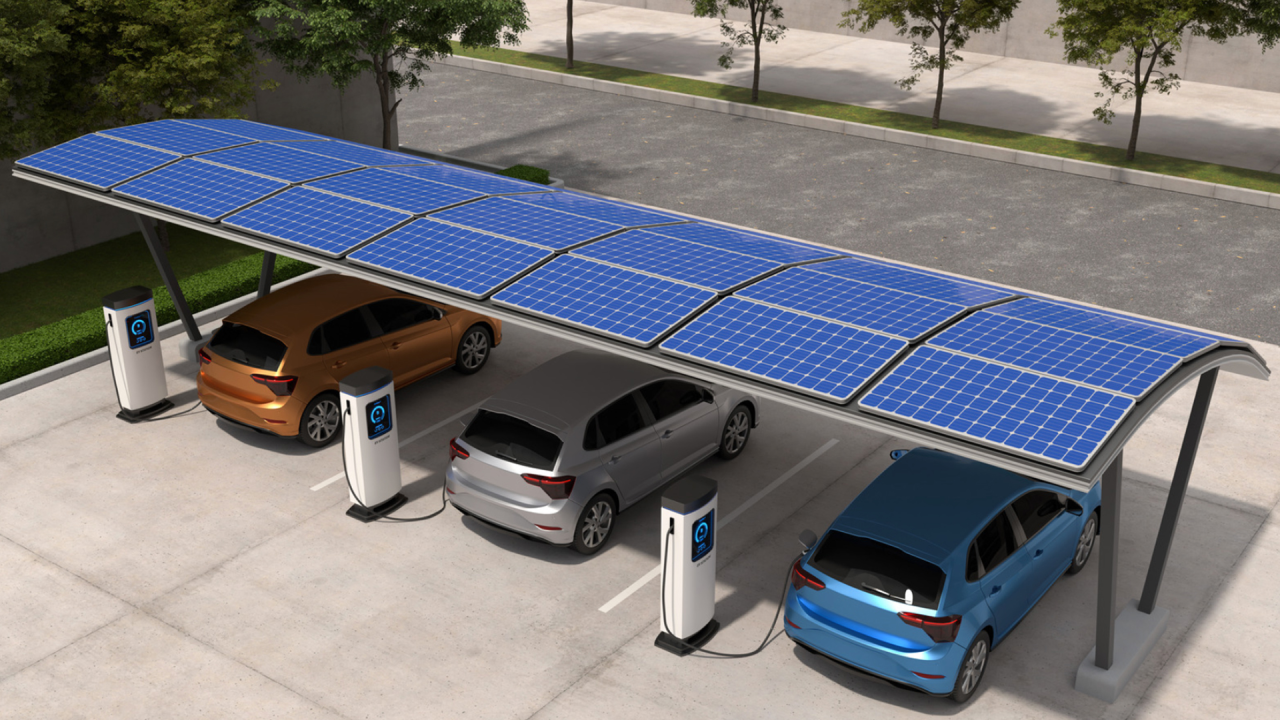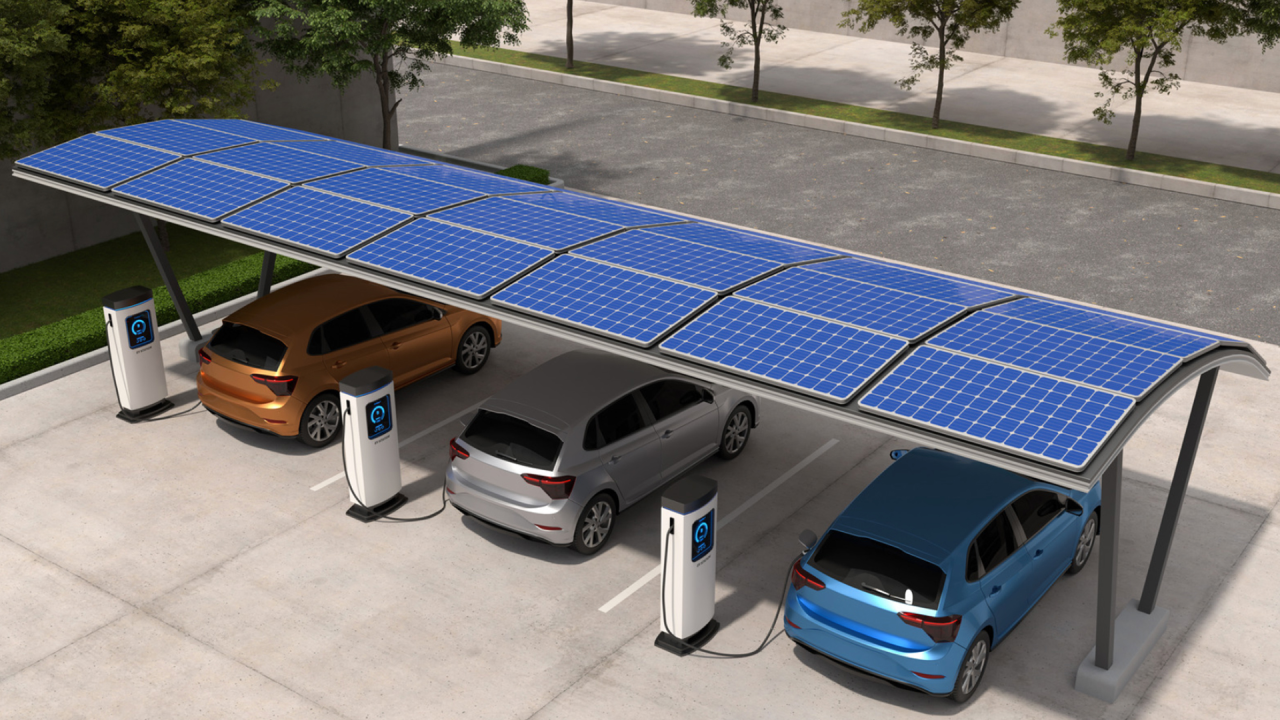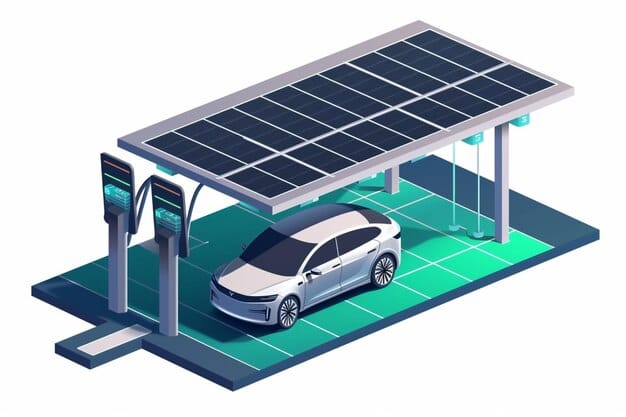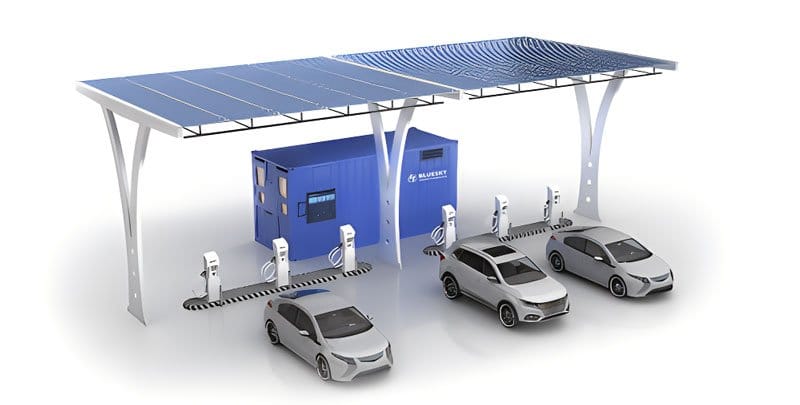The Road Ahead for Solar Electric Vehicles (Solar EVs).
Solar EVs are vehicles equipped with photovoltaic (PV) panels that harness sunlight for energy, they promise to address challenges associated with traditional electric vehicles (EVs)


Solar EVs are vehicles equipped with photovoltaic (PV) panels that harness sunlight for energy, they promise to address challenges associated with traditional electric vehicles (EVs), such as charging infrastructure, range anxiety, and reliance on non-renewable electricity grids.
However, the widespread adoption of Solar EVs depends on addressing technological, economic, and societal barriers.
This article explores the road ahead for Solar EVs, highlighting opportunities, challenges, and the future outlook.
The Promise of Solar EVs
Solar EVs are designed to combine the benefits of EVs with renewable solar energy.
These vehicles are equipped with integrated solar panels that convert sunlight into electricity, either supplementing or entirely powering their energy needs.
This innovation offers several key advantages:
- Extended Range: By generating power while driving or parked, Solar EVs can reduce dependency on charging stations and extend their driving range, especially in sunny regions.
- Energy Independence: Solar integration makes EVs less reliant on electricity grids, which may still depend on fossil fuels in many regions.
- Cost Savings: Over time, Solar EVs reduce fuel and charging costs by utilizing free solar energy.
- Reduced Environmental Impact: Harnessing solar energy directly lowers greenhouse gas emissions and enhances the overall sustainability of EVs.

Opportunities in Solar EV Development
1. Advancements in Photovoltaic Technology
Innovations in PV technology are pivotal to the future of Solar EVs. Researchers are developing more efficient and lightweight solar panels that can fit seamlessly onto vehicle surfaces. Emerging technologies like perovskite solar cells and multi-junction panels promise higher energy conversion rates, making Solar EVs more viable for everyday use.
2. Integration with Smart Infrastructure
Solar EVs are part of the broader ecosystem of smart and sustainable cities. Integrating these vehicles with smart grids and solar-powered charging stations will optimize energy usage, reduce grid stress, and accelerate the adoption of renewable energy.
3. Decentralized Energy Systems
Solar EVs support the shift toward decentralized energy systems. In regions with unreliable electricity grids, such as parts of Africa and South Asia, Solar EVs can operate independently, providing mobility and energy solutions simultaneously.
4. Application in Public and Commercial Transport
The scalability of Solar EVs makes them suitable for public and commercial transport. Solar-powered buses, taxis, and delivery vehicles can significantly lower operational costs and emissions for fleet operators, especially in urban centers.
5. Solar Potential in Developing Regions
Developing countries with abundant sunlight stand to benefit the most from Solar EVs. By leapfrogging traditional energy systems, these regions can adopt clean mobility solutions tailored to their unique environmental and economic conditions.
Challenges on the Road to Mass Adoption
While the potential of Solar EVs is immense, there are hurdles that need to be overcome for them to achieve widespread adoption:
1. Limited Energy Generation Capacity
The surface area of most vehicles limits the amount of solar energy that can be captured and converted. Current solar panels on vehicles often supplement the battery but cannot entirely replace grid-based charging.
2. High Initial Costs
The integration of solar panels into EVs increases their upfront costs, making them less accessible to middle- and lower-income consumers. While operational savings offset these costs over time, affordability remains a key concern.
3. Efficiency of Solar Panels
Even the most advanced solar panels convert only a fraction of sunlight into usable energy (typically 15–22%). Improving panel efficiency is critical for maximizing the utility of Solar EVs.
4. Weather Dependency
Solar EVs are highly dependent on sunlight, making them less effective in regions with extended cloudy or rainy seasons. Battery storage systems and hybrid charging options are necessary to address this limitation.
5. Durability and Maintenance
Solar panels on vehicles are exposed to harsh weather conditions, vibrations, and road debris, raising concerns about their longevity and maintenance costs.
6. Consumer Awareness and Acceptance
Many consumers remain unfamiliar with the concept of Solar EVs. Educating the public about their benefits and addressing concerns about reliability and practicality will be essential for mass adoption.

Pioneering Solar EV Projects
Several companies and organizations are leading the way in Solar EV development:
- Lightyear (Netherlands): Lightyear’s solar-powered car, Lightyear 0, incorporates high-efficiency solar panels capable of adding up to 70 kilometers of range per day.
- Sono Motors (Germany): The Sono Sion features integrated solar panels and offers affordable solar mobility solutions for urban users.
- Aptera Motors (USA): Aptera’s aerodynamic Solar EV is designed to cover up to 16,000 kilometers annually on solar power alone.
- Kayoola EVS (Uganda): Uganda’s solar-powered buses demonstrate the feasibility of Solar EVs in public transport, especially in regions with abundant sunlight.
Government Policies and Industry Support
The success of Solar EVs will depend on proactive policies and incentives. Governments can:
- Subsidize Solar EVs to lower costs for consumers.
- Invest in Research and Development for more efficient PV technologies.
- Promote Solar-Powered Charging Infrastructure, especially in rural and underserved areas.
- Collaborate with Automakers to ensure solar integration becomes a standard feature in EV designs.
The automotive industry must also prioritize sustainability by embracing solar integration and working with energy providers to create a seamless ecosystem for Solar EVs.
The Future Outlook for Solar EVs
The road ahead for Solar EVs is promising but requires coordinated efforts from governments, industries, and consumers.
Key trends shaping the future include:
- Technological Breakthroughs: Advances in PV technology, energy storage, and vehicle design will make Solar EVs more efficient and affordable.
- Global Solar Potential: Regions with high solar potential, such as Africa, South Asia, and the Middle East, will likely lead to adoption.
- Integration with Renewable Energy Grids: Combining Solar EVs with renewable energy grids will create a sustainable mobility ecosystem.
- Sustainability as a Selling Point: As consumers prioritize sustainability, automakers will increasingly market Solar EVs as environmentally responsible options.
Conclusion
Solar EVs represent a transformative step in the journey toward sustainable transportation.
While challenges remain, the synergy of solar technology and electric mobility has the potential to redefine the automotive industry and significantly reduce the environmental footprint of transportation.
By investing in innovation and fostering collaboration, we can ensure that the road ahead for Solar EVs leads to a cleaner, greener, and brighter future for all.




